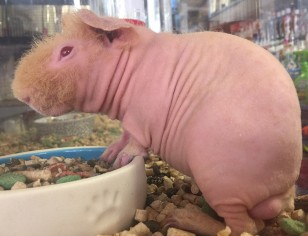Our Fish
Posted On 05 Oct 2021

Bringing home your first fish
It happens all the time. You see a beautiful fish swimming happily in the aquarium shop. You chose the fish yourself netting it with great care. You bring it home. Put it into your tank. You admire it all through the night.
The next morning, the fish is dead. The first thing that comes to mind: you got cheated. The aquarium shop sold you a sick fish. You go back to the shop to complain. But the shopkeeper shows you the other fishes and they are all still happily swimming in the same tank that you selected the fish from the day before.
Some things must have gone wrong. And very likely it is the transferring of the fish that brought about the disaster.
Fishes are sold in oxygen filled plastic bags. Like all animals, they are subject to stress. And stress can kill; it can weaken their immune system and lead them to infections and diseases. Some fishes may die after a few days or weeks after they succumb to infections or diseases resulting from the stress during the transfer.
When transporting, avoid strong light, agitation and temperature fluctuations. A fish tossing violently in a plastic bag in the car can be really stressed up.
The first thing to do is NOT to pour the fish straight into the aquarium water.
1. Float the plastic bag in the tank for about 20 minutes to equalize the temperature of the water in the plastic bag and the aquarium water.
2. Open the bag and slowing put in a bit of the aquarium water.
3. Do this every few minutes, so that the fish can adjust to the pH that is the acid and alkaline content of the water. If this is not adjusted properly, the fish can die – sometimes within minutes.
4. This is particularly so if the pH difference in your tank and the shop is great. You can test the pH value by using pH test kits available from the aquarium shops. If the pH difference is 1 or above; example: if the shop’s pH is 7. And your pH is 6, you have to adjust very slowly; some fishes cannot tolerate sudden pH changes. The easiest thing to do is to change some of the aquarium water with de-chlorinated tap water. Our tap water is usually around pH 7 – pH 8 depending on where you live. With the change of water, your aquarium tank water pH will rise. Get the pH as close as possible to the water from the aquarium shop before putting in the fish.
PH STRESS IS A SILENT KILLER. You may think that all these efforts are too troublesome. But remember, if you want to see your $1000 arowana still happily swimming in the morning, it is well worth the trouble to lose some sleep over it. And talking about arowana, make sure you have the tank securely covered. Most fish will jump in a new environment. And out of water, any fish is as good as dead in the morning.
Click here to view our range of products for your lovely Fishes.
https://www.petmart.sg/products/fish/pr?catid=214
© Petmart Pte Ltd
It is the Neon Tetra (Paracheirodon innesi).
It is active, graceful, and they shoal like swimming jewels in your tank.
They originated from the Amazon in South America. But today, they are farm bred in enormous
You can breed them in your tank. They like soft water (like the discus) around pH 5.5 – pH6. They demand good quality water and have a preference for a temperature around 23 – 24 degree C.
They take flakes, live and frozen foods. They cost around 20 cents each

 Contact
Contact

















 Point
Point